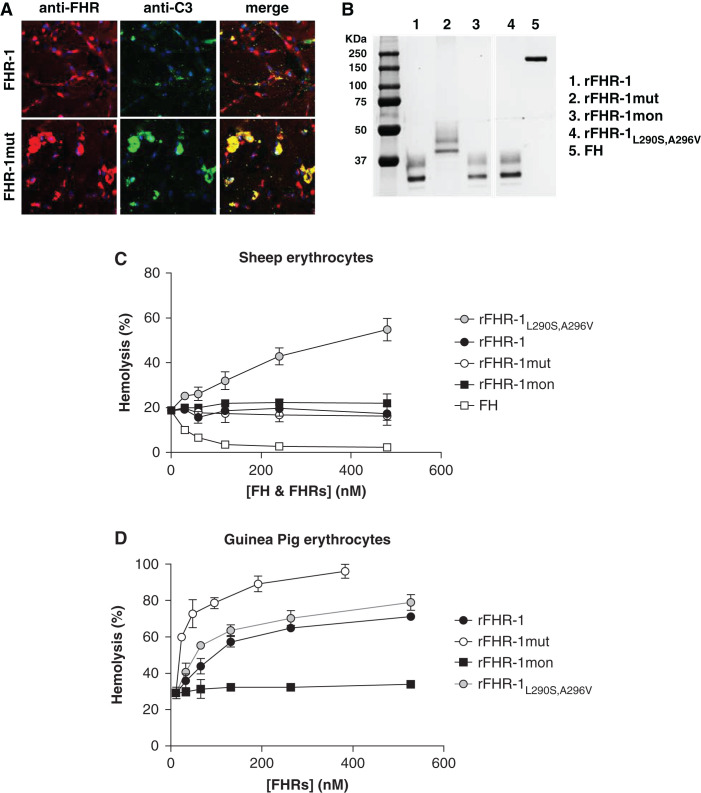Figure 6.
Complement regulation on surfaces can be overcome by the binding of FHR-1 proteins, and it is dependent on the surface context. (A) HREpiCs seeded on a cover glass were incubated with 20% NHS supplemented with either rFHR-1 (0.44 µM) or mutant rFHR-1 (0.44 µM). The deposition of FHR proteins (red staining) or C3 (green staining) was detected with the antibodies 2C6 and 12.17, respectively. Representative images of n=2 experiments are shown in each case. Original magnification, ×60. (B) Coomassie-stained SDS- PAGE gel of the recombinant FHR-1 proteins used in the FH-dependent hemolytic assays using either (C) ShEs or (D) GpEs. Before the addition of increasing concentrations of different rFHR-1 proteins, the conditions of the hemolytic assays were set to a basal lysis of 20%–30% (see Methods). rFHR-1L290S,A296V was used as a positive control for lysis. Conversely, FH was used as a control for the prevention of lysis. Percent hemolysis calculated as the mean±SD of three independent experiments.

